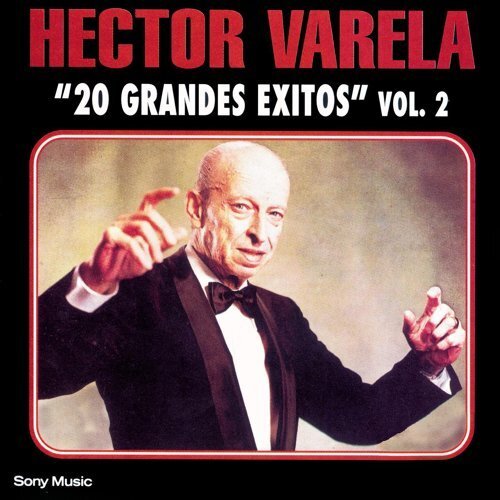4a) Rodolfo Biagi in the Post-78rpm Era
Just like Gardel, Carlos Di Sarli and Orlando Goñi, Rodolfo Biagi, the “Witched Hands,” left us with a young age and successfully made himself a popular myth. He unveiled his LP age in April 1950, and finally bequeathed us in total 54 recordings of high fidelity, featuring until 1962 Hugo Duval, the ideal singer of his orquesta.
Must-haves (5 discs):
These three lovely Reliquias albums, DBN Sus exitos con Duval, Heredia, Saavedra y Amor (DBN DHSA), DBN Su Orquesta y sus Cantores (DBN SC), DBN Solos de Orquesta (DBN SO), cover Biagi’s final output at Odéon. They are mostly faithful LP/tape transfers yet without meticulous care, which means they all have speed issues to some extent.
These two absolute essentials which respectively complete his catalog in Columbia and Music Hall, are EU-18008: Rodolfo Biagi con Hugo Duval and MH 88: Mariposa. They are precious reel-to-reel tape transfers, but the latter one does have some speed/curve issues to be dealt with.
The List
With Hugo Duval 1950-1962 (Odéon, Columbia, Music Hall)
Instrumental and Others
4b) Héctor Varela in the Post-78rpm Era (until 1962)
Although a small sub-label of EMI/Odéon, Pampas ventured into experimental reel-to-reel tape recording with Héctor Varela as early as May 1952, marking them as pioneers in embracing technological advances. Following a trajectory akin to Biagi, Varela secured a contract with Columbia in 1954 and later, in 1961, transitioned to Music Hall. A prolific studio artist, Varela's records enjoyed sales comparable to those of D’Arienzo.
Collecting Varela’s discography is a challenging and often thankless task. Not only does he not belong to the “immortals (aka the big four)” and receive minimal attention from milongueros/DJs today, but the record companies he collaborated with are far from mainstream (neither Víctor nor Odéon). I've heard rumors from renowned tango maestros that Varela was a Nazi and, out of envy for Pugliese’s popularity in the 50s, would inform the police to arrest him.
Rumors are just that—rumors. However, it's evident he wasn't a beloved figure among the public. His albums, from a collector’s standpoint, are purely commercially oriented and easily go out of print. The repertoire is extremely disordered and unsystematic, akin to a troublesome endeavor. Despite this, I will strive to compile a comprehensive list for Varela aficionados. His music falls into the most playable category, and DJs and dancers should cease overlooking and disliking him.
Must-haves (13 discs):
Two selections (instrumental+vocal) featuring the initial stage of Varela’s orquesta: DBN SPO and DBN NC. They are very beautiful LP/tape transfers with unparalleled results, though some better transfers do exist in the world.
EU-18004, 18005 and 18011 consist of more than half of Varela’s output in Columbia. The transfers were executed very cursorily, despite the sound engineers having rare opportunities to access the master tapes. I suspect it was a result of EU’s internal managerial issues on the edge of its shutting down. Varela’s best hits disappeared from these three albums - possibly a direct instruction from Sony Music.
Sony Music - 20 Grandes Exitos (SN GE)
A wonderful compilation with Varela’s best hits in best quality: Fueron tres años, Historia de un amor, Muchacha, Eras como la flor, Noches de Brasil - just to name a few.
Sony Music - 20 Grandes Exitos Vol.2 (SN GE 2)
Varela’s last years in Columbia from 1958 to 1961. Most tracks do not exist in the EU series. Note that this album is not a sequel of SN GE. They belong to different series.
Sony Music - Tangos del Sur Vol.1 (SN Sur 1)
Some beautiful late-1950 Instrumentals that cannot be found elsewhere.
Sentir El Tango/Altaya 73, H. Varela con Singers - Paciencia (AS 73)
Supreme transfers of Canzoneta, Igual que dos Palomas, Tierra Negra, and more.
Sony Music - Fumando Espero (SN FE)
Another must-have, featuring Varela’s instrumental tracks in amazing sound quality.
Music Hall - Hector Varela Colleccion de Oro (MH Oro)
Varela’s complete 1962 output at Music Hall. The most valuable track is the great vals you can find no where else: Una lagrimita. The last six Music Hall tracks in 1963 are not here, including El Ultimo Café by Ernesto Herrera.
Columbia: Tangos de la Casa Columbia (COL TCC)
An early release of Varela’s Philips work.
EMI Memorias (EM M)
Supreme transfers of Laborde’s Noches de Cabaret and Garré’s Yuyo Brujo.
Could-haves:
EMI Grandes Exitos (EM GE)
Este Es El Tango Porteño 10CDs (EETP)
CTA 416, Héctor Varela Vol.2
DL 2020, Héctor Varela Vol.2
Sony Music - Tangos del Sur Vol.2 (SN Sur 2)
Sony Music - 20 Exitos Originales (SN EO)
CTA 415, Héctor Varela Vol.1
Could be a must-have, featuring some exclusive early 78-rpm transfers
The Comparison List
Instrumental 1950-1962 (Odeón, Columbia, Music Hall)
Armando Laborde y Argentino Ledesma 1950-1962 (Odeón, Columbia, Music Hall)
Rodolfo Lesica 1951-1960 (Odeón, Columbia)
Other Singers 1952-1962 (Odeón, Columbia, Music Hall)
Milongas y Vals (Odeón, Columbia, Music Hall)

































